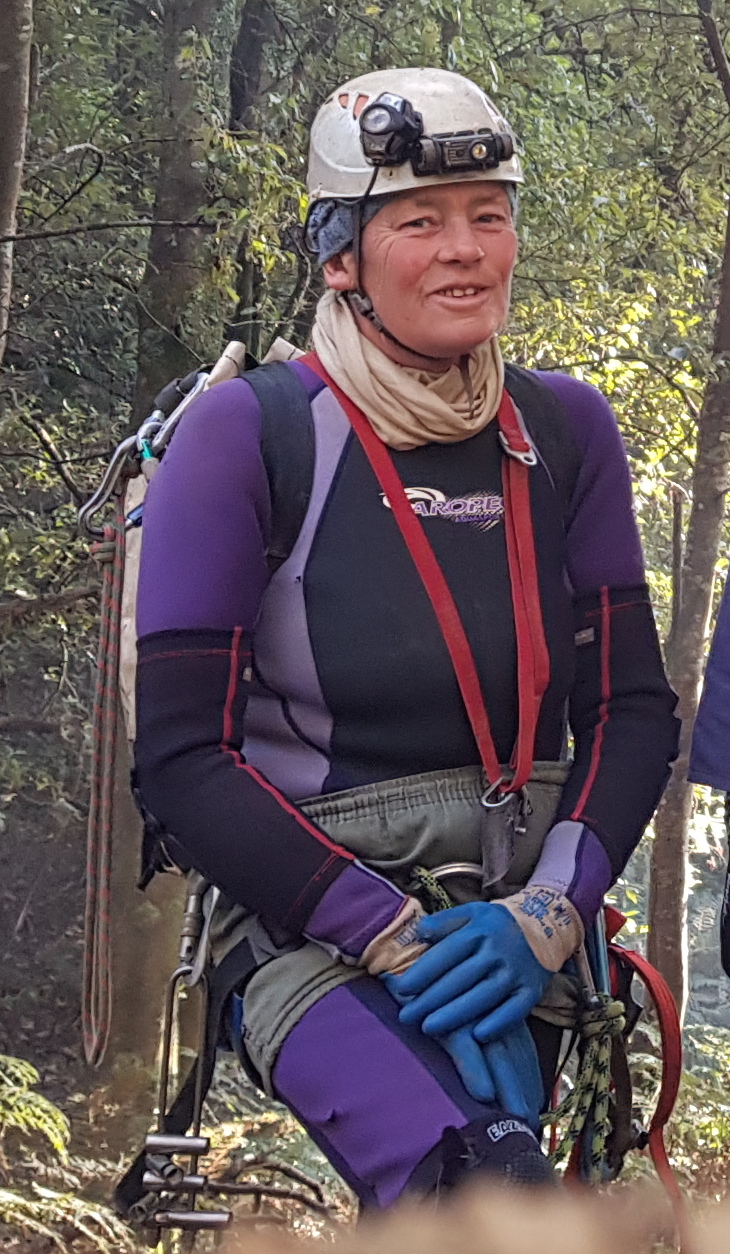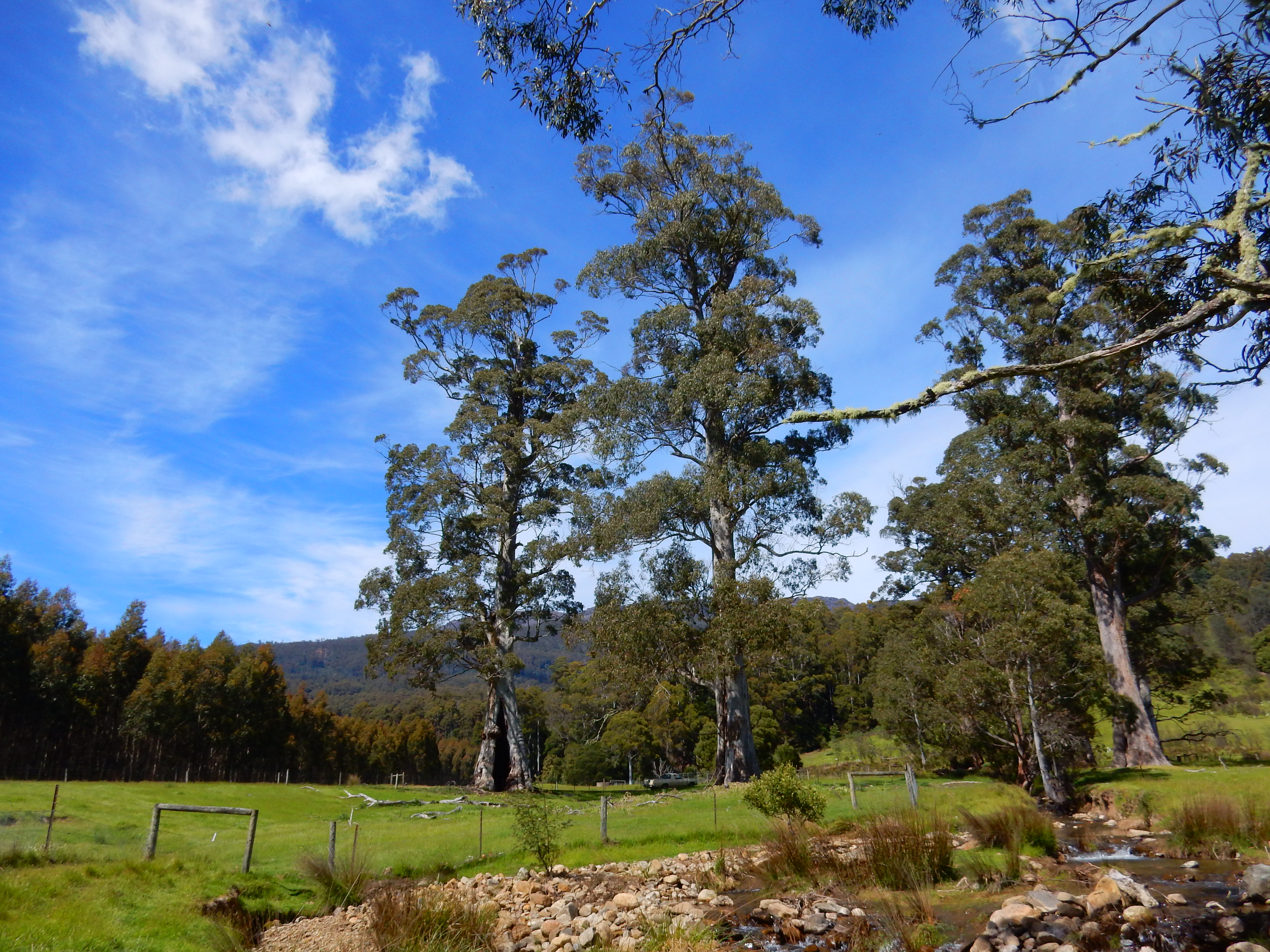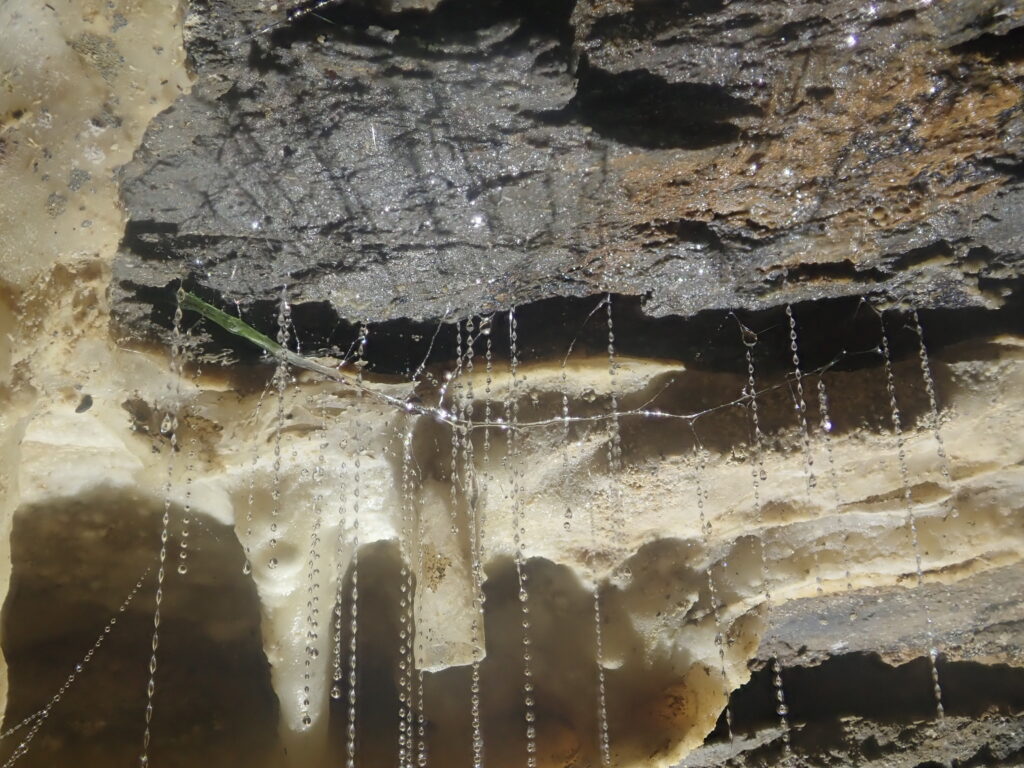By achieving Ecotourism Australia Certification status, Wild Cave Tours joins fellow exemplary operators in terms of sustainability and provision of authentic, high-quality nature-based tourism experiences.
The ECO Certification logo means that you are guaranteed to be part of a genuine and authentic nature experience that looks after the environment. The ECO Certification program assures you that certified products are backed by a commitment to sustainable practices and provide high quality nature-based tourism experiences.
Wild Cave Tours’ owner-operator, Deb Hunter, is a caver who runs day-trip adventures for visitors in Honeycomb Cave, our most important and extensive recreational cave. However we also have authorised access to caves of the nearby Tasmanian Wilderness World Heritage Area (TWWHA), which is the main focus for the Tours. Deb has a long history of working to document values of the caves and landscape of this secluded area of the Mole Creek karst. Deb works beside the Aboriginal custodians to protect the cultural landscape she works in and to engage the next generation in caring for country.
The area is of outstanding Aboriginal significance and natural values. These values are explained as we traverse Country to visit the caves (scroll this page to read details of these values). An Aboriginal elder may be booked for groups interested in hearing first hand of the ancient cultural values. Please ask.
Coming on a Wild Cave Tour supports Deb’s other (volunteer) work as a custodian or steward of this place.

Formal recognition of these values followed decades of documentation and lobbying by local cavers and conservation groups for protection of the caves and karst from large scale logging. Finally, the Tasmanian Land Conservancy administered Karst Forests Program funding to purchase and fence a strip of additional land required to protect several important caves and to form a contiguous stretch of natural habitat extending from the adjoining World Heritage listed alpine highland to the lowland cave reserves. This land was vested in the state’s reserved lands estate and added to the Tasmanian Wilderness World Heritage Area in 2013. It is the focus for Wild Cave Tours’ operation.
Deb manages ongoing revegetation and land rehabilitation conservation projects engaging secondary student groups, while in-cave management and maintenance is routinely undertaken during normal tours.
The area is a biodiversity hotspot due to its altitudinal range and its forest-meadow interface. For example, wedge tailed eagles frequently hunt here. Birdwatching and photography is recommended for any holiday companion who is not caving.
The invertebrate fauna of the caves are conspicuous and of immense interest. They include Gondwana relicts. Glow-worms, cave spiders, crickets, blind shrimps, harvestman, cave beetles, pseudoscorpions. Mammals and monotremes also frequent the caves and connecting surface overflow stream.

Climate change: Evidence of climate change was felt as early as the mid 1970s in Tasmania, with die back of vulnerable highland cider gums (Eucalyptus gunnii). Since then, the frequency and magnitude of El Nino – La Nina climatic oscillations have increased further. In the last decade, dry lightning strike saw unprecedented fire across the peat soils in the alpine catchment above the caves, resulting in tragic depletion of these organic soils and loss of alpine ecosystems that do not regenerate after fire. The coupling of increased runoff from denuded alpine catchments and higher magnitude rainfall events led to unprecedented erosion in the 2013 TWWHA extension.
Landscape resilience: This land is now being managed to increase its resilience in the face of further floods and to increase biodiversity through seed collection, replanting and maintenance. This conservation work now forms an educational resource and a means of engaging between volunteer groups, corporate neighbours, students, next generation aboriginal community and tourists. Deb works under a Plan iterated in a formal document she has funded and produced as part of the local group ‘Friends of the Great Western Tiers/kooparoona niara.’
Significance of the Tasmanian Wilderness World Heritage Area (TWWHA) D. Hunter 4 March 2020 Sourced August 2017: UNESCO World Heritage List, Tasmanian Wilderness http://whc.unesco.org/en/list/181 Sourced January 2020: whc-sites-xls (2019) http://whc.unesco.org/en/syndication UNESCO World Heritage List (1125 properties) “Mixed” properties (natural and cultural criteria): 431. Only two meet seven of the ten possible criteria: China: Mount Taishan. Criteria: (i)(ii)(iii)(iv)(v)(vi)(vii)2 Tasmanian Wilderness. Criteria: (iii)(iv)(vi)(vii)(viii)(ix)(x) 2 Description (TWWHA): In a region that has been subjected to severe glaciation, these parks and reserves, with their steep gorges, covering an area of over 1 million ha, constitute one of the last expanses of temperate rainforest in the world. Remains found in limestone caves attest to the human occupation of the area for more than 20,000 years. 1Number of mixed properties meeting 7 criteria (2), 6 criteria (2), 5 criteria (10), 4 criteria (11), 3 criteria (11), 2 criteria (3). 2UNESCO World Heritage List CRITERIA Cultural: (i) to represent a masterpiece of human creative genius (ii) to exhibit an important interchange of human values, over a span of time or within a cultural area of the world, on developments in architecture or technology, monumental arts, town-planning or landscape design (iii) to bear a unique or at least exceptional testimony to a cultural tradition or to a civilization which is living or which has disappeared (iv) to be an outstanding example of a type of building, architectural or technological ensemble or landscape which illustrates (a) significant stage(s) in human history (v) to be an outstanding example of a traditional human settlement, land-use, or sea-use which is representative of a culture (or cultures), or human interaction with the environment especially when it has become vulnerable under the impact of irreversible change (vi) to be directly or tangibly associated with events or living traditions, with ideas, or with beliefs, with artistic and literary works of outstanding universal significance. (The Committee considers that this criterion should preferably be used in conjunction with other criteria) Natural: (vii) to contain superlative natural phenomena or areas of exceptional natural beauty and aesthetic importance (viii) to be outstanding examples representing major stages of earth's history, including the record of life, significant on-going geological processes in the development of landforms, or significant geomorphic or physiographic features (ix) to be outstanding examples representing significant on-going ecological and biological processes in the evolution and development of terrestrial, fresh water, coastal and marine ecosystems and communities of plants and animals; (x) to contain the most important and significant natural habitats for in-situ conservation of biological diversity, including those containing threatened species of outstanding universal value from the point of view of science or conservation

